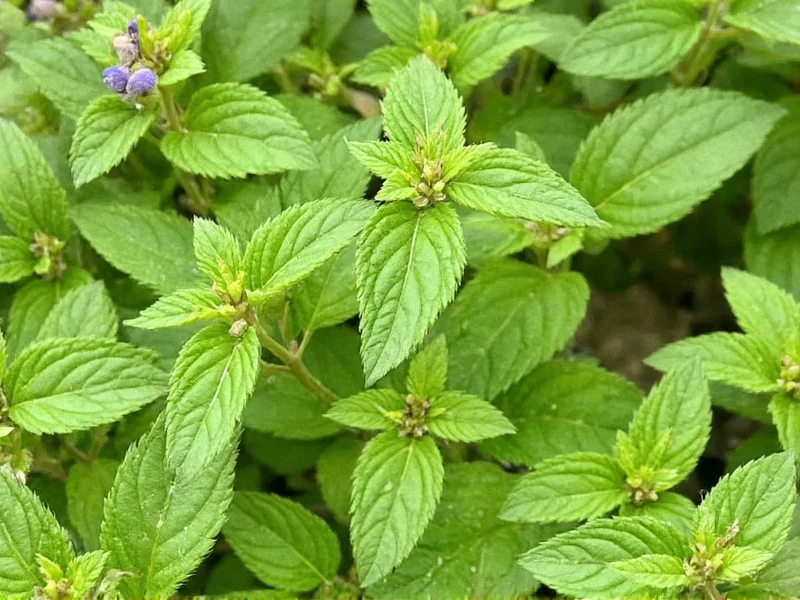Yes, herbs do go bad—both fresh and dried varieties lose potency and flavor over time. Fresh herbs typically last 1-3 weeks in the refrigerator, while dried herbs maintain quality for 1-3 years when stored properly. Degradation signs include color fading, loss of aroma, mold growth, or a musty smell. Proper storage significantly extends shelf life.
Understanding herb shelf life is essential for maintaining culinary quality and avoiding waste. While herbs don't typically become dangerous when expired, their flavor, aroma, and nutritional value diminish significantly over time. This comprehensive guide explains exactly how long different herbs last, how to recognize spoilage, and proven storage techniques to maximize freshness.
How Herbs Degrade Over Time
Herbs undergo chemical changes that affect their quality. Fresh herbs contain high moisture content, making them susceptible to bacterial growth and mold. Dried herbs lose volatile oils responsible for their distinctive flavors and aromas through oxidation. The degradation process accelerates with exposure to light, heat, humidity, and air.
Unlike perishable foods that pose immediate health risks when spoiled, degraded herbs primarily affect dish quality rather than safety. However, moldy or musty-smelling herbs should be discarded immediately as they can introduce off-flavors and potentially harmful compounds into your food.
Signs Your Herbs Have Gone Bad
Recognizing spoilage in herbs requires attention to multiple sensory indicators:
- Visual changes: Yellowing, browning, or black spots on fresh herbs; significant color fading in dried herbs
- Texture issues: Sliminess or mushiness in fresh herbs; excessive brittleness in dried herbs
- Aroma loss: Faded or musty smell instead of the herb's characteristic fragrance
- Mold presence: Visible fuzzy growth, particularly on fresh herbs stored in humid conditions
- Taste deterioration: Bland or unpleasant flavors when sampled
Shelf Life Comparison: Fresh vs. Dried Herbs
| Herb Type | Fresh Shelf Life | Dried Shelf Life | Best Storage Method |
|---|---|---|---|
| Basil | 1-2 weeks | 1-2 years | Fresh: Stem in water, covered loosely with bag; Dried: Airtight container away from light |
| Cilantro | 1-2 weeks | 1-2 years | Fresh: Roots trimmed, stems in water; Dried: Vacuum-sealed container |
| Parsley | 2-3 weeks | 2-3 years | Fresh: Wrapped in damp paper towel; Dried: Dark glass container |
| Rosemary | 2-3 weeks | 3-4 years | Fresh: Wrapped in paper towel; Dried: Airtight metal container |
| Thyme | 2-3 weeks | 3-4 years | Fresh: Stem in water; Dried: Cool, dark pantry storage |
Optimal Storage Techniques for Maximum Freshness
Proper storage dramatically extends herb shelf life. For fresh herbs, treat them like cut flowers: trim stems, place in water, and cover loosely with a plastic bag. Store in the refrigerator's crisper drawer, which maintains higher humidity. Delicate herbs like basil and cilantro benefit from room temperature storage with stems in water, away from direct sunlight.
Dried herbs require protection from the four enemies of shelf life: light, heat, air, and moisture. Transfer store-bought dried herbs from flimsy packaging to airtight glass or metal containers. Store in a cool, dark pantry away from the stove or dishwasher. For long-term preservation, consider vacuum-sealing dried herbs or storing them in the freezer.
When It's Safe to Use Older Herbs
While degraded herbs won't make you sick (unless mold is present), their culinary value diminishes. Slightly faded dried herbs can still be used in longer-cooking dishes like stews where flavor extraction takes time. Herbs that have lost significant aroma require increased quantities to achieve desired flavor—typically double the amount called for in recipes.
Fresh herbs showing minor wilting but no mold or sliminess can often be revived by placing stems in ice water for 15-20 minutes. Discard any herbs with visible mold, slimy texture, or unpleasant odors. When in doubt about dried herbs, perform the rub test: crush a small amount between your fingers—if little aroma releases, it's time to replace them.
Practical Tips for Extending Herb Freshness
Consider these professional techniques for maximizing herb shelf life:
- Freeze fresh herbs in olive oil using ice cube trays for ready-to-use cooking portions
- Dry excess fresh herbs by hanging them upside down in a dark, well-ventilated space
- Label all herb containers with purchase or harvest dates to track freshness
- Store dried herbs away from spices with strong odors to prevent flavor transfer
- Buy whole dried herbs rather than pre-ground when possible—they retain freshness longer
Understanding Herb Potency Over Time
The flavor compounds in herbs degrade at different rates. Delicate herbs like basil, cilantro, and dill lose potency fastest, while hardy herbs like rosemary, thyme, and oregano maintain flavor longer. Dried herbs generally retain about 60-70% of their original flavor after one year when properly stored, dropping to 30-40% by year three.
For medicinal or therapeutic applications, potency degradation becomes more critical. Herbs used for health purposes should be replaced more frequently than culinary herbs, typically within 6-12 months for fresh varieties and 1-2 years for dried.











 浙公网安备
33010002000092号
浙公网安备
33010002000092号 浙B2-20120091-4
浙B2-20120091-4